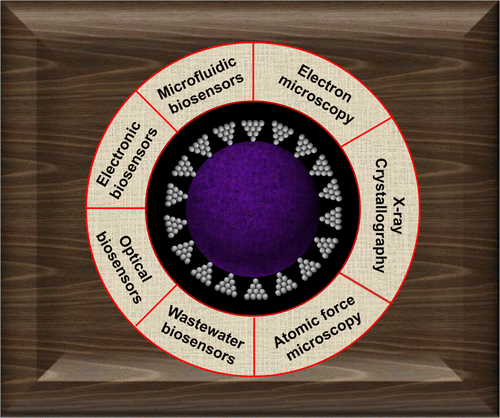Our official English website, www.x-mol.net, welcomes your feedback! (Note: you will need to create a separate account there.)
Opportunities and Challenges for Biosensors and Nanoscale Analytical Tools for Pandemics: COVID-19.
ACS Nano ( IF 17.1 ) Pub Date : 2020-06-18 , DOI: 10.1021/acsnano.0c04421 Nikhil Bhalla 1, 2 , Yuwei Pan 3 , Zhugen Yang 3 , Amir Farokh Payam 1, 2
ACS Nano ( IF 17.1 ) Pub Date : 2020-06-18 , DOI: 10.1021/acsnano.0c04421 Nikhil Bhalla 1, 2 , Yuwei Pan 3 , Zhugen Yang 3 , Amir Farokh Payam 1, 2
Affiliation

|
Biosensors and nanoscale analytical tools have shown huge growth in literature in the past 20 years, with a large number of reports on the topic of ‘ultrasensitive’, ‘cost-effective’, and ‘early detection’ tools with a potential of ‘mass-production’ cited on the web of science. Yet none of these tools are commercially available in the market or practically viable for mass production and use in pandemic diseases such as coronavirus disease 2019 (COVID-19). In this context, we review the technological challenges and opportunities of current bio/chemical sensors and analytical tools by critically analyzing the bottlenecks which have hindered the implementation of advanced sensing technologies in pandemic diseases. We also describe in brief COVID-19 by comparing it with other pandemic strains such as that of severe acute respiratory syndrome (SARS) and Middle East respiratory syndrome (MERS) for the identification of features that enable biosensing. Moreover, we discuss visualization and characterization tools that can potentially be used not only for sensing applications but also to assist in speeding up the drug discovery and vaccine development process. Furthermore, we discuss the emerging monitoring mechanism, namely wastewater-based epidemiology, for early warning of the outbreak, focusing on sensors for rapid and on-site analysis of SARS-CoV2 in sewage. To conclude, we provide holistic insights into challenges associated with the quick translation of sensing technologies, policies, ethical issues, technology adoption, and an overall outlook of the role of the sensing technologies in pandemics.
中文翻译:

流行病生物传感器和纳米级分析工具的机遇和挑战:COVID-19。
过去 20 年来,生物传感器和纳米级分析工具的文献呈现出巨大的增长,大量关于“超灵敏”、“成本效益”和“早期检测”工具主题的报告,具有“大规模”的潜力。科学网络上引用的生产”。然而,这些工具都尚未在市场上商业化销售,也无法实际用于大规模生产和用于治疗 2019 年冠状病毒病 (COVID-19) 等流行病。在这种背景下,我们通过批判性地分析阻碍先进传感技术在流行病中实施的瓶颈,回顾了当前生物/化学传感器和分析工具的技术挑战和机遇。我们还通过将新型冠状病毒肺炎 (COVID-19) 与严重急性呼吸系统综合症 (SARS) 和中东呼吸系统综合症 (MERS) 等其他大流行毒株进行比较来对其进行简要描述,以识别支持生物传感的特征。此外,我们讨论了可视化和表征工具,这些工具不仅可以用于传感应用,还可以帮助加快药物发现和疫苗开发过程。此外,我们还讨论了新兴的监测机制,即基于废水的流行病学,用于疫情早期预警,重点关注用于快速现场分析污水中 SARS-CoV2 的传感器。总之,我们对与传感技术快速转化、政策、道德问题、技术采用相关的挑战提供了全面的见解,并对传感技术在流行病中的作用进行了总体展望。
更新日期:2020-07-28
中文翻译:

流行病生物传感器和纳米级分析工具的机遇和挑战:COVID-19。
过去 20 年来,生物传感器和纳米级分析工具的文献呈现出巨大的增长,大量关于“超灵敏”、“成本效益”和“早期检测”工具主题的报告,具有“大规模”的潜力。科学网络上引用的生产”。然而,这些工具都尚未在市场上商业化销售,也无法实际用于大规模生产和用于治疗 2019 年冠状病毒病 (COVID-19) 等流行病。在这种背景下,我们通过批判性地分析阻碍先进传感技术在流行病中实施的瓶颈,回顾了当前生物/化学传感器和分析工具的技术挑战和机遇。我们还通过将新型冠状病毒肺炎 (COVID-19) 与严重急性呼吸系统综合症 (SARS) 和中东呼吸系统综合症 (MERS) 等其他大流行毒株进行比较来对其进行简要描述,以识别支持生物传感的特征。此外,我们讨论了可视化和表征工具,这些工具不仅可以用于传感应用,还可以帮助加快药物发现和疫苗开发过程。此外,我们还讨论了新兴的监测机制,即基于废水的流行病学,用于疫情早期预警,重点关注用于快速现场分析污水中 SARS-CoV2 的传感器。总之,我们对与传感技术快速转化、政策、道德问题、技术采用相关的挑战提供了全面的见解,并对传感技术在流行病中的作用进行了总体展望。



























 京公网安备 11010802027423号
京公网安备 11010802027423号